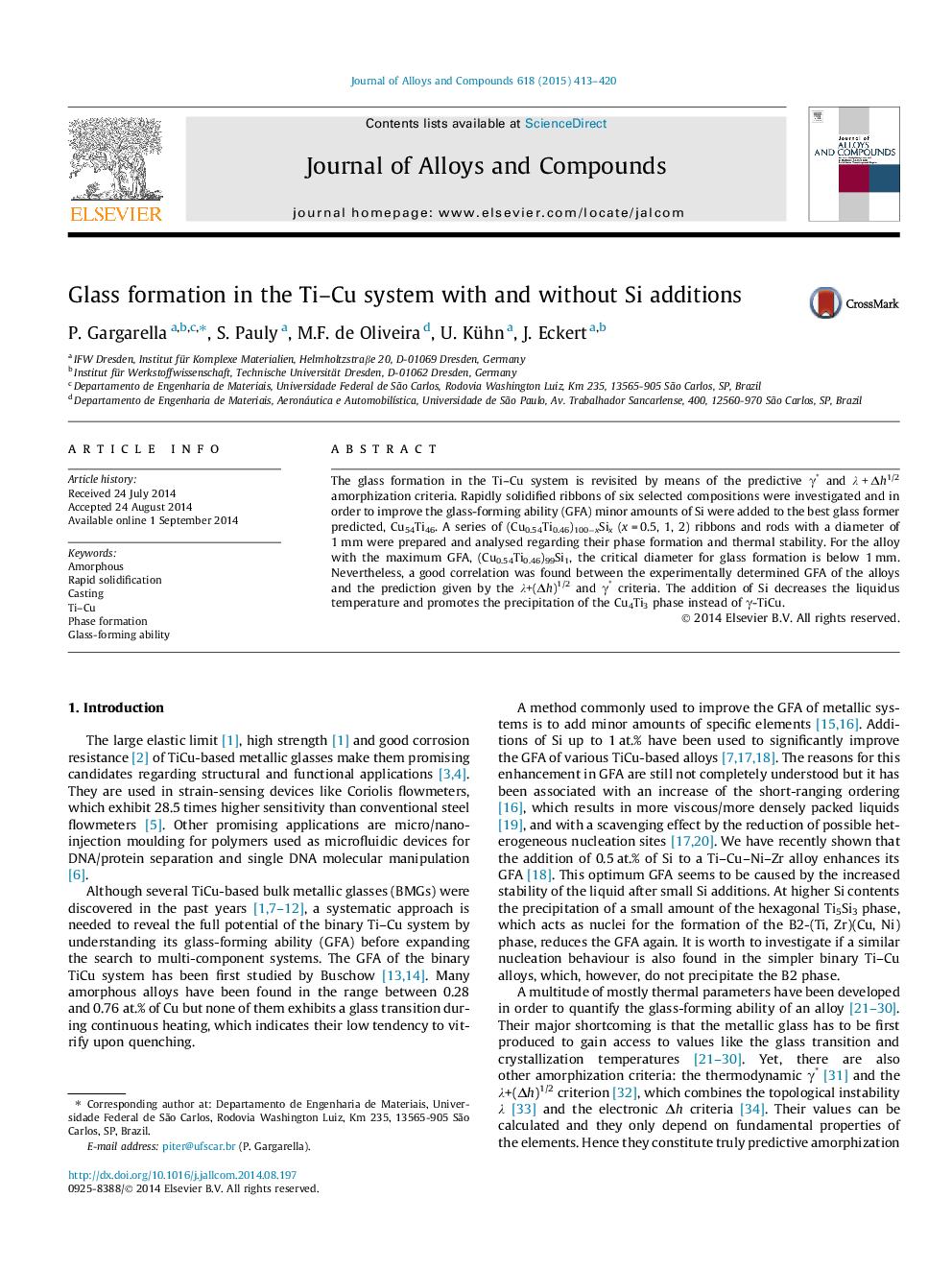| Article ID | Journal | Published Year | Pages | File Type |
|---|---|---|---|---|
| 1610380 | Journal of Alloys and Compounds | 2015 | 8 Pages |
•Glass formation in the Ti–Cu system was predicted by two amorphization criteria.•Minor amounts of Si were added to the best glass former predicted, Cu54Ti46.•Good correlation was found between the experimental results and the prediction.•An optimum glass-forming ability occurs with addition of 1 at.% Si.•Si additions decrease the liquidus temperature and induce precipitation of Ti5Si3.
The glass formation in the Ti–Cu system is revisited by means of the predictive γ* and λ + Δh1/2 amorphization criteria. Rapidly solidified ribbons of six selected compositions were investigated and in order to improve the glass-forming ability (GFA) minor amounts of Si were added to the best glass former predicted, Cu54Ti46. A series of (Cu0.54Ti0.46)100−xSix (x = 0.5, 1, 2) ribbons and rods with a diameter of 1 mm were prepared and analysed regarding their phase formation and thermal stability. For the alloy with the maximum GFA, (Cu0.54Ti0.46)99Si1, the critical diameter for glass formation is below 1 mm. Nevertheless, a good correlation was found between the experimentally determined GFA of the alloys and the prediction given by the λ+(Δh)1/2 and γ* criteria. The addition of Si decreases the liquidus temperature and promotes the precipitation of the Cu4Ti3 phase instead of γ-TiCu.
